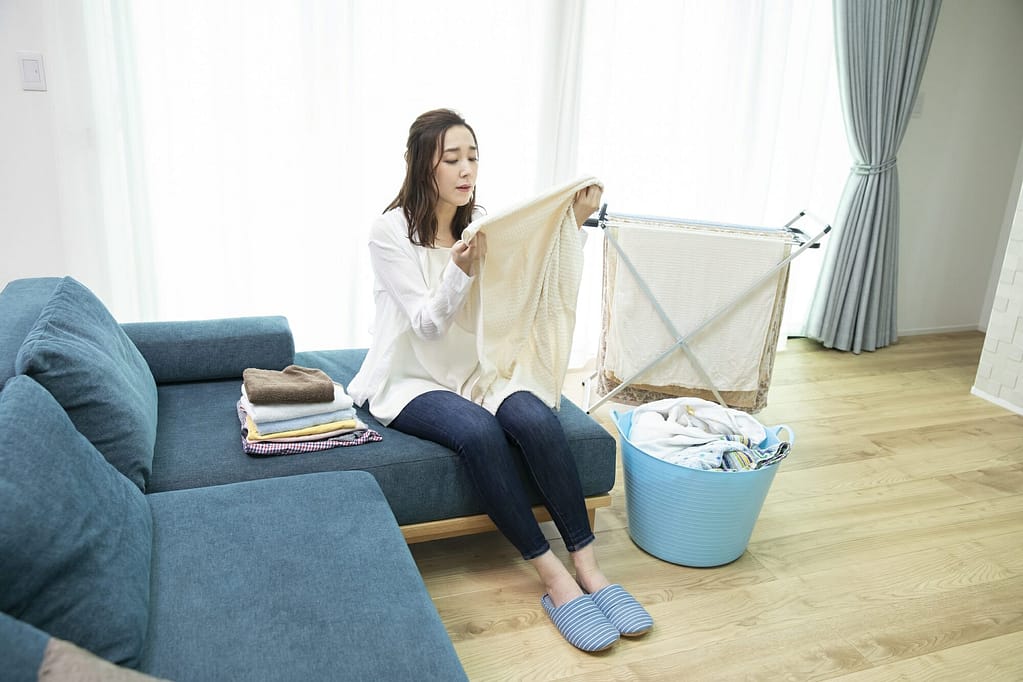- Life in Japan
How To Stop Mold In Japanese Summer?
The Japanese summer is a fun and memorable part of life in Japan. There are many iconic scenes, including spectacular firework displays, vibrant Yukata, watermelons by the seaside, and buzzing cicadas, to name a few. If you would like to learn how to stay cool in Japan, check out our article here. However, once you have lived in Japan for one summer, you will, unfortunately, become familiar with another iconic site – mold growth. Stay tuned and see how you can stop mold this summer in Japan.
What is the rainy season?
Summers in Japan are hot and humid. In particular between May and August (in particular peaks from June to late July) Japan also experiences 梅雨(つゆ Tsuyu) or the rainy season. Characteristics of the rainy season include high humidity and equally high temperature. The rainy season makes washing clothes quite tricky. The constant and sudden down pouring, followed by high temperature and sticky moisture creates the perfect environment for mold to thrive.
What is Japanese Mold?
Mold is a fungal growth that occurs in warm damp environments making Japanese Summer a kind of spring break for fungi. Mold can grow almost overnight, not just in wet clothes or towels but also in sneakers, cups, bags, tiles, and tatami boards. It smells musty and is just nasty. The mold in Japan is usually black in appearance and seems to be quite aggressive.

How to prevent Japanese mold?
The best way to avoid mold during the Japanese summers is to prevent it from growing in the first place, which is not as easy as it may sound. However, Link Japan Careers is going to do the best it can in giving you a mold-free summer with these five tips. If you are living in a 南向き(minamimuki south-facing) apartment or house, congratulations, you are going to be playing Japan summer life on easy mode. If there is one thing that mold naturally hates, it is direct sunlight as it stops mold.
1) Direct sunlight
When it is possible, you are going to want to do all your washing during prolonged periods of sunlight. It may sound like common sense (it is), but you are going to want to do your laundry early in the morning on a clear day between the hours of 9 and 12. Japanese summers can get quite hot, and with direct sunlight, you are going to dry out most clothes in this time window likely. Provided the weather is still sunny, and your clothes are dry, you are going to take them inside, fold them, and put them away. If you leave them out, you run the risk of the fabric, collecting moisture and creating an opportunity for the mold to grow and spread when you take the clothes in later.
2) Dehumidifiers
Turning on an Air conditioner and letting it run all day is useful but not a financially viable option for most of us. Also, you run the risk of wearing out the filter and trust us when we say you are not going to want to do that in the middle of summer.
So what do you do if you want to fix the air quality?
Answer – you are going to go to the supermarket or home store and buy some dehumidifiers. There are many types, but the simplest version, which is just as effective, is a small box that you will open and place in your closet next to your bed, in the kitchen, etc. If you wish to buy an electric dehumidifier, they can be purchased from most electric appliance chains and online but are somewhat expensive.
3) Silica gel packs
Remember those little bags of ‘do-not-eat’ crystals that come in the shoe box when you buy shoes? Those are called silica gel packs and believe it or not are worth their weight in gold for your tsuyu survival kit. They work in the same way as the non-electric dehumidifiers and absorb moisture to keep materials dry. Put a packet in each set of draws, where you store clothes, linen cupboards, or put them in your suit pocket while they are hanging—side note. If you own any leather material (jackets, suede shoes), you should keep dehumidifiers nearby.
4) Vacuuming tatami floors regularly and maintaining adequate ventilation
When you live in Japan, you may have the opportunity to own a tatami room. Tatami rooms are great and add to the experience of living in Japan. However, many people who first come to Japan may not have an idea of how to look after a tatami flooring.
This can be an issue during the rainy season because mold loves tatami grass as much as the Japanese people do. To stop mold from spreading like wildfire in your tatami room, try to vacuum it daily. Yes, that is right. Daily. If you are unable to do so, at least try to clean and vacuum it during the weekend. A quick 5 minute clean is probably all it will need. Also, keep the windows open where you can and allow for as much sunlight into the room as possible. If you do this you will be able to stop the mold in Japan.
The side effect of this is the room will get hot, so make use of fans and the air conditioner where you can. Also, try and create space for the natural air to blow through by opening doors and windows.
5) Japanese washing machines and dryers
As you can see, the relative humidity in Japan can do quite a number on your clothes. As a result, your immediate reaction may be to use the washing machine/dryer. We would advise you to wait however, as you, the drying can stain your clothes if it has mold, or cause the mold to spread in the machine. To combat this be sure to clean your washing machine filters and use 洗濯機クリーナー(せんたくきくりーなー Washing machine cleaner). Also, when you have dried your clothes, remove them from the washing machine immediately.
How to remove Japanese mold?
So there are our top 5 ways of preventing mold in Japan. However, what if the mold has already taken hold? What should you do? Mold can permanently damage materials if it is not taken care of quickly, so the most important thing is to stop it as soon as possible.
1) Direct sunlight
If the damage is only a day or so old, you can probably get rid of the mold by leaving your shoes or clothing outside under direct sunlight. This is the easiest way to stop mold and the least stressful. As a bonus, it will also get rid of that musky smell.
2) Use an anti-mold agent
If the mold is growing within your bathroom or tiles, you are going to want to use bleach-based agents like ‘Kabi Killer,’ which you can buy from a chemist or local supermarket. If you have never cleaned a bathroom before, it is straightforward. You are going to open the windows or doors to keep the room ventilated. Then you should spray the bleach/mold killer over the mold and wait for a few seconds before scrubbing with a hard brush once you are done using the showerhead or a mop to clean the area with regular water and wash again.
If you have mold on your tatami, don’t panic. The best way to clean the tatami floor is to:
a) Buy a brush and Ethanol
b) Open the windows and create a well-ventilated space.
c) Lightly pour a minimal amount of ethanol directly on the mold and start scrubbing with the brush.
d) Once done, splash some water on a floor towel and dab the tatami.
3) Non-toxic-cleaning methods?
If you are unsure about using cleaning chemicals, or perhaps you have caught the mold growth early, try using the following.
a) Distilled White Vinegar – Vinegar is naturally acidic and can break mold down and kill it. It is also quite cheap and easily found across Japan.
b) Baking soda mixed with water – The baking soda has a high pH that can help stop mold in Japan.
Unsure how to remove humidity and existing mold from your furniture and textiles? Check out this dedicated blog from Porch for some more tips and advice.

The rainy season does end.
In summary, the rainy season is pretty easy to adapt to and overcome. While mold does quickly grow during these months, with a few changes in routine, you can quickly stop it from ruining your clothes and instead focus on enjoying what the summer months have in store!
Interested in living and working in Japan? Check out ALT jobs with Interac here.


